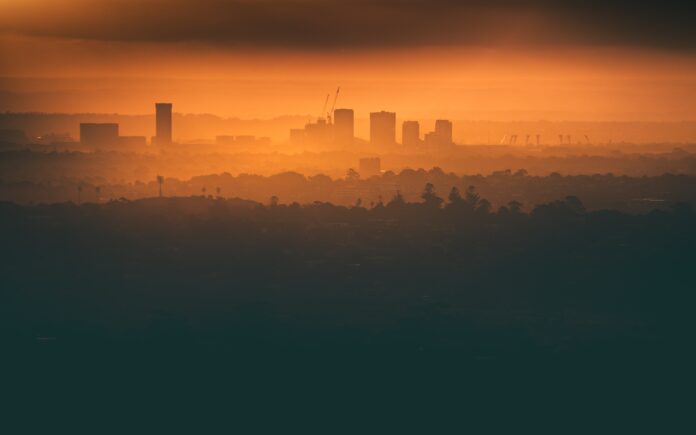
By
Imagine being trapped inside for more than 24 hours without air conditioning — without being able to open the windows because the air quality is so bad.
That was the case this week for Chester Wilson III, a Black poetry editor living in Bed-Stuy, an area in Brooklyn with a 40% Black population. He saw a dense sheath of smog over the city, which was a direct result of the unprecedented 440 wildfires currently burning in Canada.
“The air is going to disproportionately affect the people who are stuck outside, who don’t have access to masks, who are required to be out in the heat at the mercy of this catastrophe,” Wilson says.
Indeed, for unhoused people in Gotham — the majority of whom are Black and may be unable to afford masks or protective glasses — there’s no escape.
Even for folks who are housed and are being told to turn on their air conditioning instead of opening windows, the cost of electricity may make that a tough choice given that research shows Black people already spend more per year for electricity than other groups. That’s because homeowners have the option to upgrade to more efficient appliances, while renters are left to the whims of landlords who may or may not install new windows or energy-conserving refrigerators and stoves.
As a result of the climate change-caused fires, nine million acres of forest burned in just two days, and 75 million people across the United States received air quality alerts.
For Wilson and the millions of other Black people living across the East Coast — and as far west as Ohio, Tuesday started as a typical summer day. But thanks to wind patterns, within a matter of hours, dark clouds of wildfire smoke loomed overhead.
“The cityscape of New York is obscured beneath a shroud of unprecedented pollution from Canada’s distant wildfires. A call to arms should echo through the smoke-streaked skyscrapers,” Frederick Joseph, a two-time New York Times best-selling author and social justice advocate, wrote on Instagram on Tuesday.
“The time for action on climate change is not just upon us — it lingers in the rear view mirror. We are chasing our own survival.”
Indeed, the pollution from wildfires became so bad in the Big Apple, that on Thursday, the city had the worst air quality in the world.
On Wednesday, the World Health Organization revealed that New York’s air was 14.5 times their recommended air quality guideline value. The day before, the National Weather Service posted on Twitter about dirty air and its dangers.
“Air quality has plummeted across much of the northeast as smoke from wildfires in Canada moves south. Poor air quality can be hazardous. Before spending time outdoors, check the air quality forecast. Make sure you aren’t doing yourself more harm than good,” the tweet reads.
The time for action on climate change is not just upon us — it lingers in the rear view mirror. We are chasing our own survival.
FREDERICK JOSEPH
And it’s true — dirty air can be dangerous. Especially for Black people, who are three times as likely to die from polluted air than white folks and are also three times as likely to die from asthma.
From 2018 to 2020, there were four million Black people with asthma. For people with respiratory problems like asthma, contact with particle pollution can be deadly. Particle pollution, also known as particulate matter (PM), includes a mixture of liquid and solid droplets in the air.
“Particle pollution threatens everyone’s health, and people with lung or heart disease are among those at greater risk, including people with asthma. Health disparities can compound on one another,” Laura Kate Bender, the National Assistant Vice President of Healthy Air, tells Word In Black.
“Overlapping factors like high rates of asthma, lack of access to quality, affordable healthcare, and other harms from systemic racism can lead to greater impacts from unhealthy air,” she says.
Overlapping factors like high rates of asthma, lack of access to quality, affordable healthcare, and other harms from systemic racism can lead to greater impacts from unhealthy air.
LAURA KATE BENDER, HEALTHY AIR
According to the American Lung Association’s 2023 State of the Air report 120 million Americans reside in areas with unhealthy air quality, and 64 million are people of color.
“Black people are going to be affected by this. It’s not just the person on the street. It’s their friends, their mother’s friends. We’re all in this together,” Wilson says.


